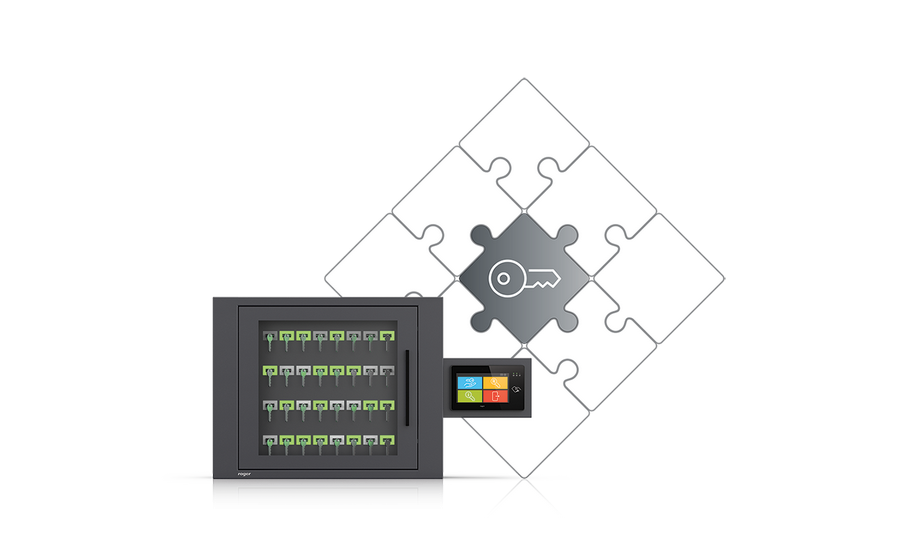Integration with the RKD32 Key Cabinets System
RKD series key depositors can be managed remotely from the RACS 5 access control system software and become part of the entire access control system.

About solution
RKD series key depositors can be managed remotely from the RACS 5 access control system software and become part of the entire access control system.
The integration of the key deposit system with the access control system management software not only removes the need to manage depositors from local control panels but significantly increases the functional capabilities of the key deposit system by adding multiple mechanisms existing in the access control system, such as integration with CCTV, fire and intruder alarm systems, advanced methods of presentation and reporting of events, remote messaging functions and online event monitoring.
Generally in the RACS 5 system, electronic key cabinets are treated as special access controllers, which on the one hand require appropriate configuration and, on the other are a source of events that the access control system registers and processes on the same basis as any other events. In particular, it is possible to define specific actions to the occurrence of selected events in the system by displaying a text message or sending an e-mail, SMS or via protocol data transmission (TCP, Http). This functionality can be especially useful in order to notify about key borrows or returns, exceeding the time allowed for key borrowing or the occurrence of an alarm event in the key tracking system. The operator supervising the system may send remote commands to key cabinets, allowing key borrowing to a user who is not authorized for a specific key or, in case of emergency, enable or disable unlimited access to keys. The occurrence of selected events on the key cabinets can be associated with the image from the monitoring camera and thus constitute an additional element of control and security of key management in the facility.
Another important advantage of integration is that users of the access control system automatically become users of key cabinets and can use the same identifiers in both systems. The definition of key authorizations is carried out according to the same rules as the definition of door privileges and allows determining who and when is entitled to selected keys.
The use of single software for managing access to doors, keys, and other assets is a great advantage for the staff operating the facility, as it not only limits the amount of software they use but also combines these different areas of the building or organisation (office, enterprise, office, school facility etc.) in one logically harmonised environment.
The VISO management program (RACS 5) enables the management of multiple key cabinets and can be used to manage them even when the facility does not have a RACS 5 access control system. Both versions of RACS 5 software (VISO ST and VISO EX) support the integration of key cabinets on the basis of an additional licensed software module.




